Are These Dudes the Future of News?
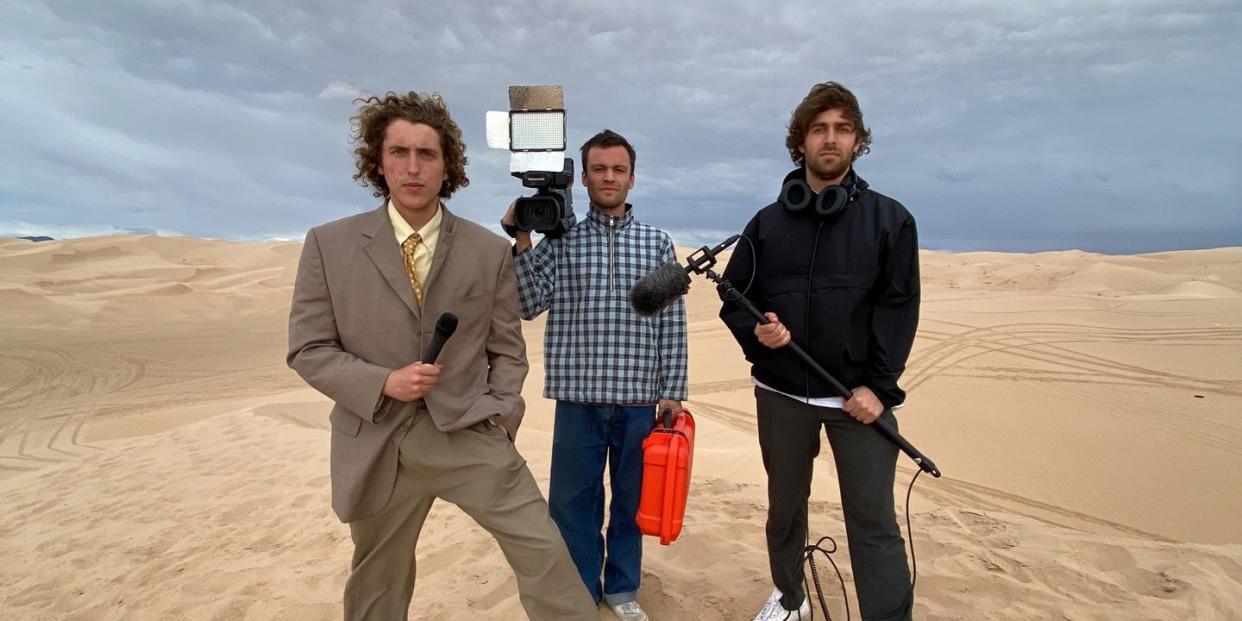
It was around 3:30 on what qualifies as a normal afternoon when the journalist Andrew Callaghan opened a notebook in his bedroom office and made a to-do list:
Today’s schedule:
Review Alex Jones Footage
Send Sarena Logic File
Make Sandy Hook Graveyard Scene
String Out Mark Bankston
Blur Boss Top’s Family from O Block
Write nice story for Pop Pop
Callaghan, who is 25 and lives in the Los Feliz neighborhood of Los Angeles, is the frontman of Channel 5 News, the latest iteration of the lean, immersive documentary operation he founded in 2019 with his two closest friends, which brings in about $100,000 a month from fans on Patreon. Its YouTube subscriber base of 2.2 million rivals those of the Washington Post and USA Today and, in the strange category-collapse of online media, the Malaysian un-boxer-slash-gamer Bobacott and a stunt firearms reviewer called Kentucky Ballistics. In an era of cord-cutting, when most younger audiences never had cords to begin with, Channel 5 also represents an important slice of the future of news—if, that is, news is the word for their work.
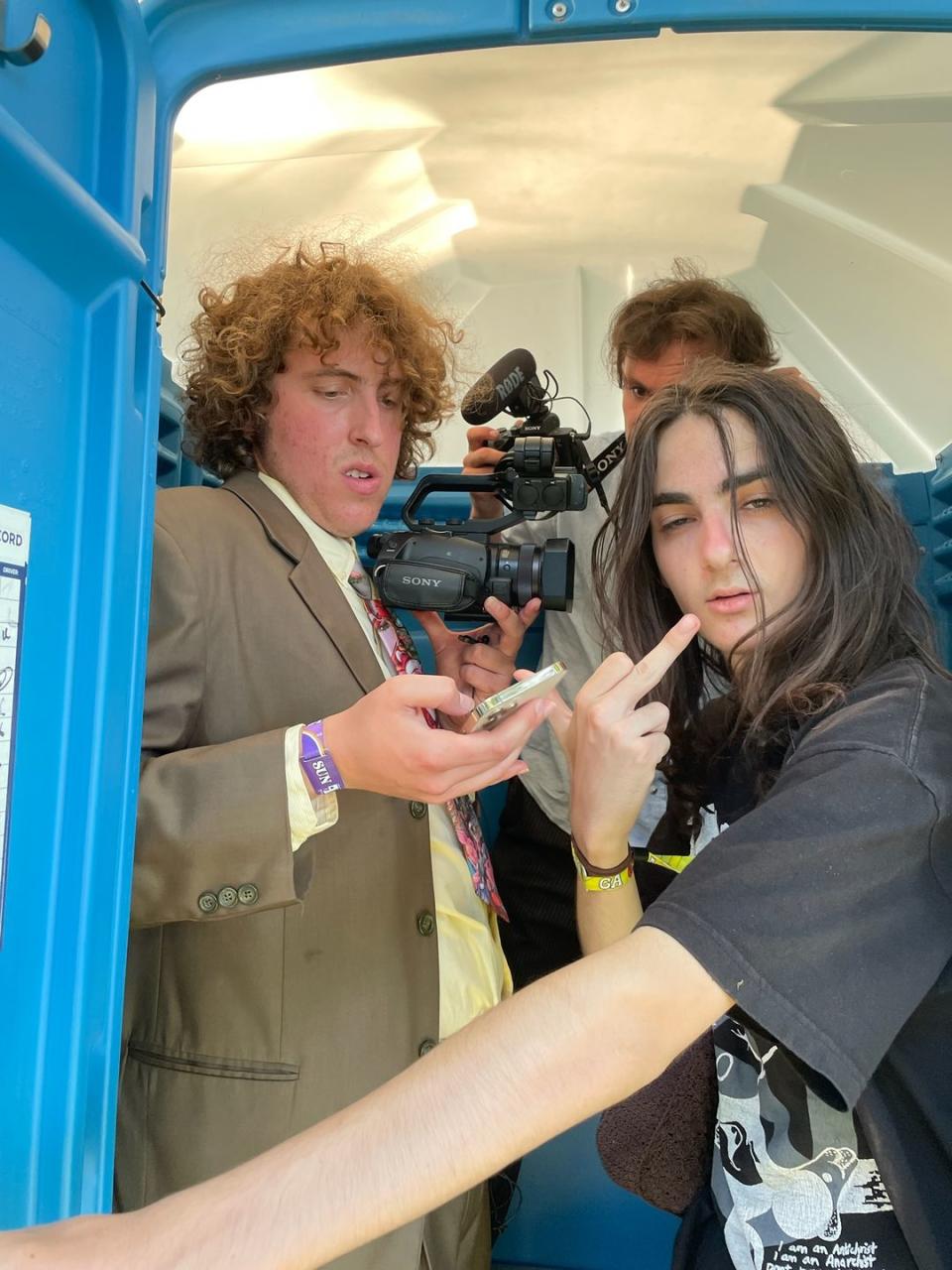
Callaghan is over six feet, with a sharp brow, the nose of a Roman emperor and a crown of frizzy, strawberry-blond curls. He’d just come in from takeout lunch by his pool—Thai chicken curry with rice—which he ate, then spilled, then continued eating it off the concrete with a plastic fork, finally abandoning the pile and throwing the bag on top.
About the to-do list:
Callaghan first interviewed Alex Jones, founder of Infowars and now-bankrupt denier of the Sandy Hook shooting, over the summer; their exchange went viral after he posted it on Patreon. He followed up that coverage with a trip to Connecticut, where he visited the graves of children killed at Sandy Hook and interviewed Mark Bankston, the lawyer representing Sandy Hook families in several suits against Jones;
The Logic file is for a cartoon show Channel 5 is developing;
The faces that needed pixelating appear in a Channel 5 doc about the Chicago drill rap group O Block;
Callaghan’s grandfather, Pop Pop, was turning 75.
A week’s worth of discarded clothes covered his bedroom floor, alongside Hunter S. Thompson’s book The Proud Highway. Looming over a narrow dresser he uses as a desk was a gruesome, sand-hued oil painting five feet wide. It depicted a soldier getting his legs blown off in a blast as women and children lie amid the surrounding rubble. “I just have this painting to remind me how good I have it. ’Cause I get stressed out at this workstation,” Callaghan said.
Working largely out of an RV, Channel 5 has reported on spring breakers in Miami Beach, Nascar fans at Talladega, and dueling pro-choice and anti-abortion activists after the fall of Roe v. Wade, yielding off-beat, ethnographic shorts edited for the online attention span.
On-camera, Callaghan’s most consistent opening interview question is. “What’s on your mind?” The most common setting: a raucous, single-minded crowd. Callaghan comes off as equal parts reporter, comic, and reality-TV producer. “Our average age is like 22 to 27, but I’m trying to bring it down,” Callaghan says.
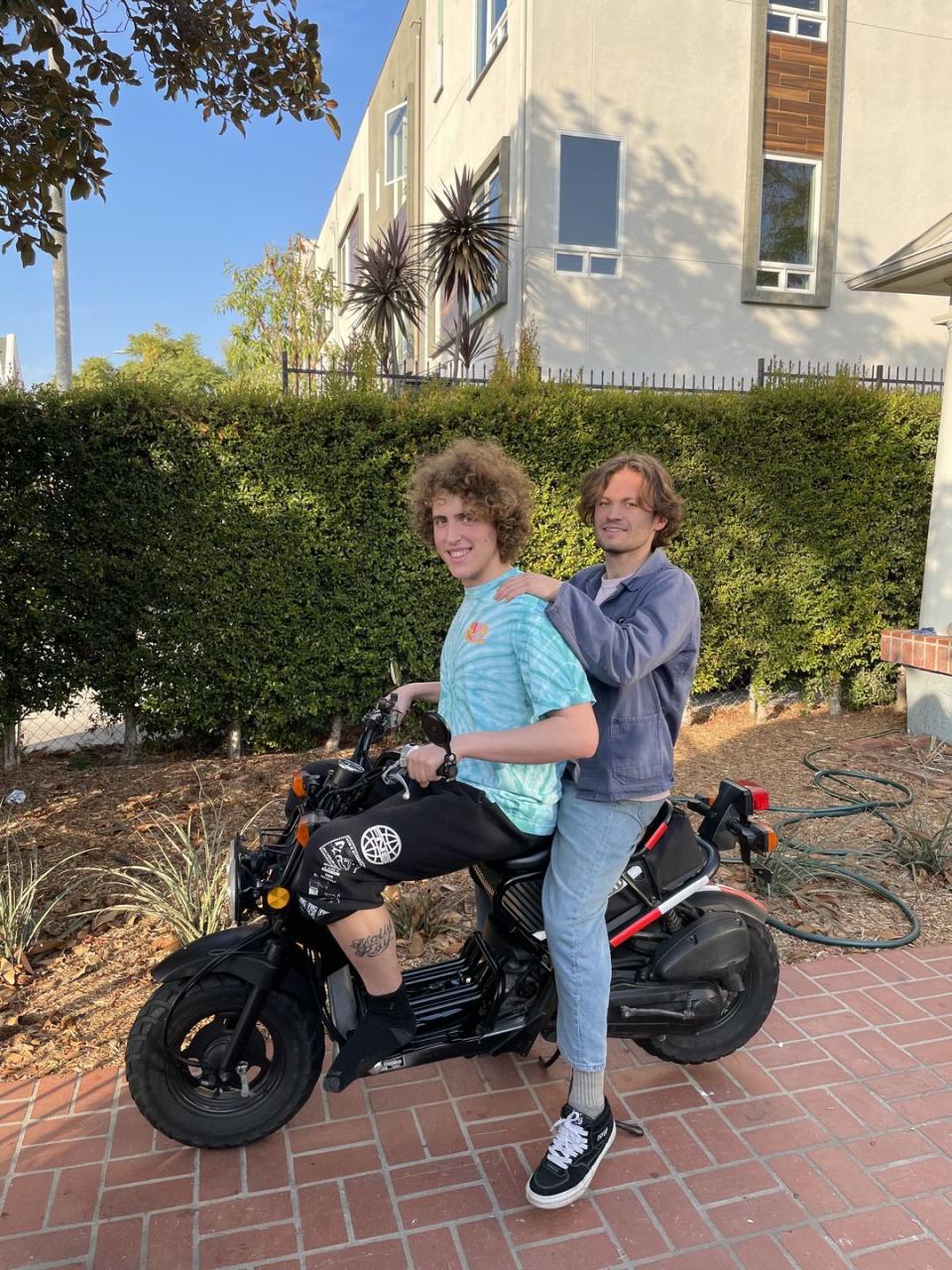
Four years ago, Callaghan was a college student in New Orleans with a sideline interviewing drunk tourists for a YouTube show called Quarter Confessions; guests often went viral talking about things like sleeping with a stepmother or a best friend’s dad while the best-friend-in-question stood in the camera frame. (“Morally questionable,” Callaghan says). His co-founders, Even Gilbert-Katz, his best friend from high school, and Nic Mosher, who he met in college, were the people he liked to hang out with.
Today, with devoted fans and a real budget to channel their ambitions, the trio behind Channel 5 is at a moment of evolution. Following the content creator’s prerogative to grow the brand, they’re making plans for a podcast and considering licensing deals with retail chains for Channel 5 merchandise. Their feature documentary on the causes of the January 6 insurrection, This Place Rules, is out now on HBO. Callaghan and Gilbert-Katz are developing a cartoon show called All City Kings set in the graffiti scene of their youth in downtown Seattle.
The big goal: to “build a functional empire that goes beyond me, Nic, and Evan,” Callaghan says.
To-do list made, Callaghan pulled up a video clip on his laptop: Will Blunderfield, a nudist yoga teacher and songwriter from Vancouver, walked on stage naked and sat at an electric piano to play a cover of Leonard Cohen’s “Hallelujah” before a sold-out crowd in Toronto. The performance was part of Channel 5’s first-ever live performance, a kind of variety show that interspersed the crew’s videos with stage cameos by the people who appear in them, as each of the founders stalked the theater’s aisles, cameras in hand.
So, yes, Channel 5 has a live show. They’ve made national news with their reporting, built a formidable audience in advertising’s most coveted demographic, landed a doc with HBO, and traded up from an RV to a house with a pool. Yet you get the feeling that everything so far has been a kind of warm-up.
Callaghan has said that what he does is make reporting for people who don’t watch the news, but the group’s videos tend to feature people who don’t show up much in the news, either. The best of Channel 5’s thirty-odd videos tend to do what Callaghan has called oscillating between parody and empathy. At ComplexCon, an expo in Long Beach, California, showcasing hip-hop and Internet culture, a video blogger explains to Callaghan, unprompted, that he’s taking a hiatus from masturbation in order to overcome a pornography addiction. At a rap festival in Utah, a slender, blond boy drops a verse before acknowledging that the exploits in his lyrics are made up. “People just want to hear straight trap shit—‘I straight shoot people!’ ‘I smoke weed!’”
As the camera lingers, his tone shifts. “I do have my songs where I pour my heart out,” he says, and explains that he's been kicked out of the house by an abusive mother, then moved to the city with his father, only to be evicted and wind up at the home of one of his companions. (Months after they met, Callaghan flew the boy to L.A. and produced his first music video.)
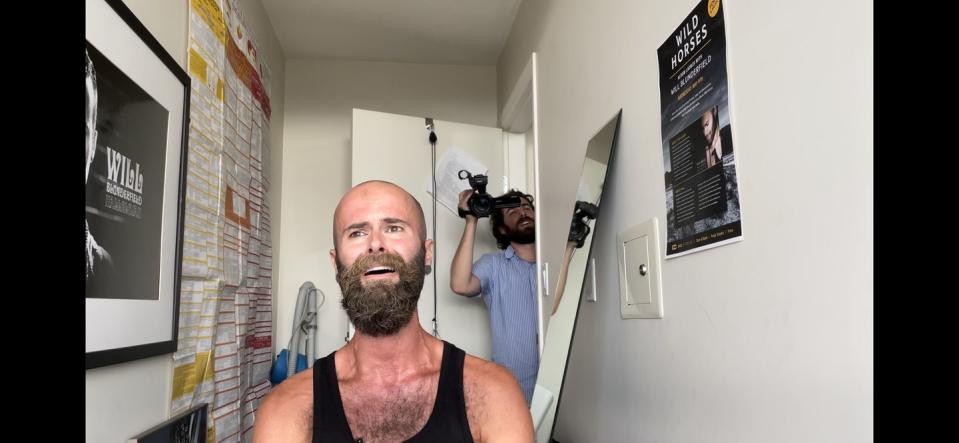
With the release of This Place Rules, Callaghan’s transition to political coverage seems firmly underway. Still, it’s hard to discern exactly where his journalism fits on the proverbial newsstand. Forty years ago, he might have been Michael Moore, a misfit bouncing among newsrooms until he made his first documentary—at age 35. Twenty years ago, he might have written for Gawker or Salon, or appeared on the Daily Show, distinct brands with a few clear competitors. Today, he’s a “content creator,” a designation so vast as to be almost meaningless. When his audience clicks away from a Channel 5 News video, there’s no reason to think they’ll tune in to anything like news: Why not a makeup tutorial, or a stand-up comedy set, on the very same platform?
Perhaps this is the world all journalism lives in now, only Callaghan’s business model acknowledges that the New York Times and the Real Housewives of Potomac are both jousting in the same attention wars.
The week I visited, Callaghan was reporting on the Alex Jones trial, a story as close to the heart of the news cycle as it was possible to get. Ten years after the Sandy Hook massacre, Jones was in Connecticut’s State Superior Court over his long-running misinformation campaign, a case in which jurors ultimately awarded parents of children who’d been killed nearly $1 billion in damages.
Why watch Channel 5 when the subject is Alex Jones? After all, you could get your coverage almost anywhere else. To answer this, consider Blunderfield, the nudist from the Channel 5 live show. “Clearly everyone is laughing at how crazy this man seems, how out-there his views are, how much misinformation he’s ingested,” the Washington Post columnist Taylor Lorenz told me in a phone interview. “But I think he feels respected by [Channel 5].” After all, she said, Blunderfield’s willing to show up to their events. If the traditional media approach to a Blunderfield or a Kelly J. Patriot—or a Jones, for that matter—would be a straightforward debunking, or a both-sides-point-counterpoint, what Callaghan offers is a tacit understanding that the audience is in on the joke, that the moral stakes of the news are already implicitly defined.
“He’s able to reach people that legacy media has overwhelmingly failed,” Lorenz said. Millennials and Gen-Zers are tired of the false equivalencies and the “eat-your-vegetables energy” of mainstream news, she explained. “Andrew understands that he’s producing entertaining content. Entertaining, funny, and informative—that sort of recipe is very powerful.”
In June, Callaghan had told me to meet the crew in Denver so we could caravan in their RV to the fiftieth annual Rainbow Gathering, when 10,000 peaceniks, hippies, and ravers were expected to convene in Routt National forest.
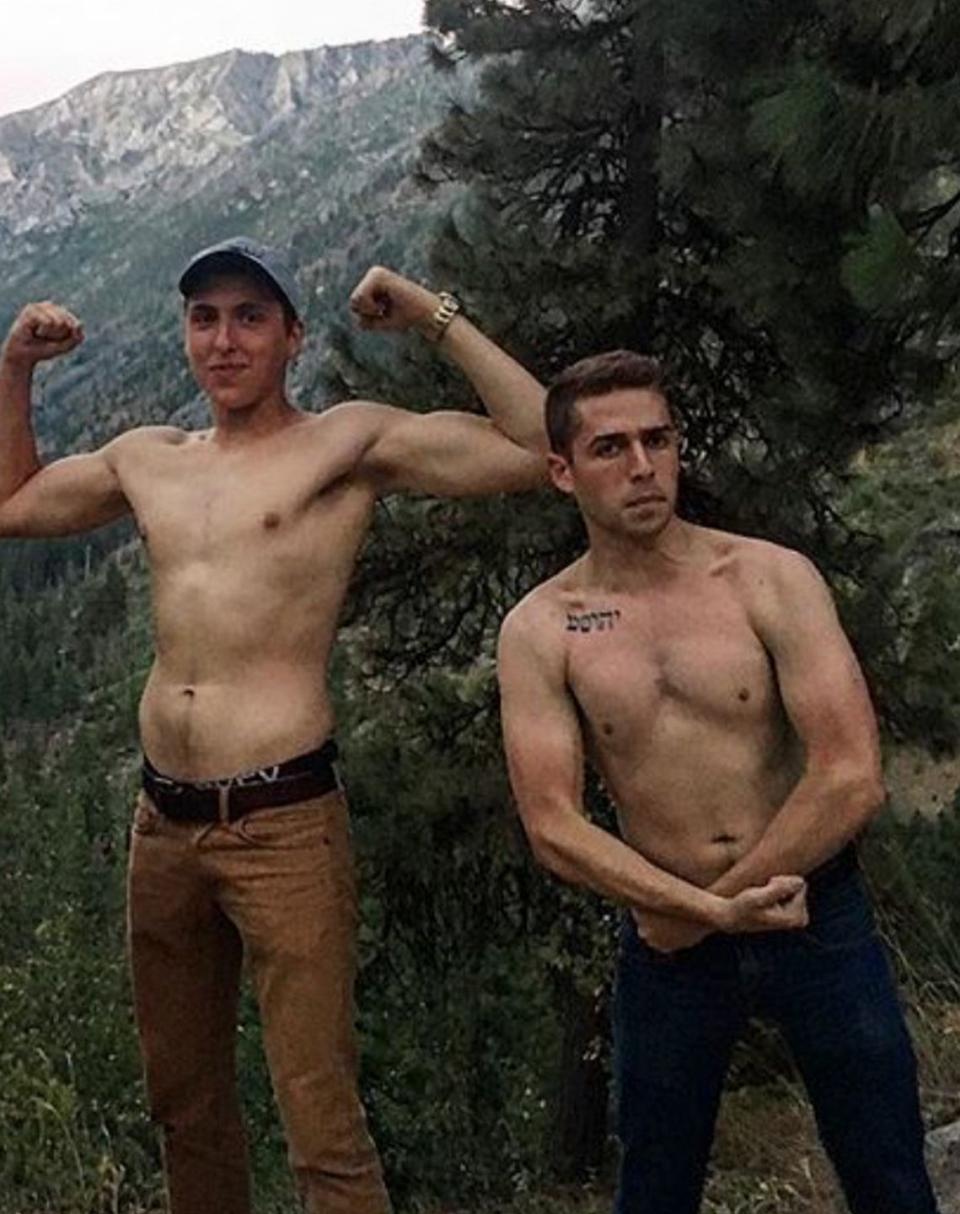
On the day of the rendezvous, he never showed. The next day, he sent me an audio message from Vancouver, explaining that they’d decided to ditch the RV and cover something else instead. “This is our new flow,” he explained. He went to Calgary for a rodeo, Chicago for a rap festival, and Key West for the annual Hemingway lookalike competition, often buying plane tickets just hours before boarding a flight. When he told me to meet him at the Sandy Hook trial, it seemed more sensible to send my editor, who lives a half hour away—just in case.
The morning of the trial, finding himself in Waterbury, Connecticut, Callaghan texted my editor, whom he hadn’t met, “Do you know courthouse addy?” He walked out the front door of the courthouse around 11:20 a.m., trailing Gilbert-Katz, who was carrying his camera equipment in a New Yorker tote bag, and Mark Bankston, the lawyer representing families in the case who had recently had a moment of fame when Jones’s attorney accidentally forwarded him the contents of Jones’s cell phone. Instead of the rumpled tan suit he’s often put on in Channel 5 videos with an air of irony, Callaghan wore a dark-blue button-down and a madras tie, flat-front dress khakis, and caramel leather dress shoes. “You caught me looking dressed up,” he said. “I figured, for a serious story, I would. So I went to Burlington Coat Factory and bought all this.”
In a park across the street, Callaghan put down his Styrofoam Dunkin’ cup and sat on the edge of an outdoor stage, speaking into a lapel mic which he pinched between finger and thumb as he asked questions, then held out to Bankston’s mouth. Though Bankston talked and talked, often in complete paragraphs, Callaghan got what he needed from a short interview, deftly jumping in to cut off tangents. Bankston said he might incorporate Channel 5’s interview with Jones into the next trial, expected to begin in 2023.
After the interview, as he and Gilbert-Katz were driving to a diner, he said, “They’re gonna use our video in court. That’s amazing.” And then: “That means we’re gonna get subpoenaed for the raw footage. It would take me forever to find that.”
“Yeah,” Gilbert-Katz said. “We lose every hard drive.”
Back in Los Feliz, Callaghan walked from his bedroom office past the living room to another bedroom office where Mosher hunched over a laptop editing a documentary excerpt they planned to show on a 36-city fall tour.
“Can I see what you got?” Callaghan said.
Gilbert-Katz wandered in and stood by the bed.
On-screen, a tanned Baby Boomer who goes by Kelly J. Patriot sat in a lawn chair outside a McMansion in foreclosure, wearing a MAGA hat and holding a sign that read: “Phil Pointer stole my home.” [Note: This name has been changed.] The upbeat pulse of the Christian-rock anthem “Child of Love” swelled under a stock-footage montage of house pets as Patriot narrated the happiest years of his life: “We had a koi pond that I built with my own hands. We had dogs, cats, rabbits, a potbellied pig. Our next-door neighbor was the assistant chief general counsel at Taco Bell. We put in a deck, and we’d jump from the jacuzzi into the pool. We had a lot of fun. Double-digit rabbits, double-digit cats.”
Gilbert-Katz and Callaghan were starting to crack up.
Callaghan, to Mosher: “Can I just try something?”
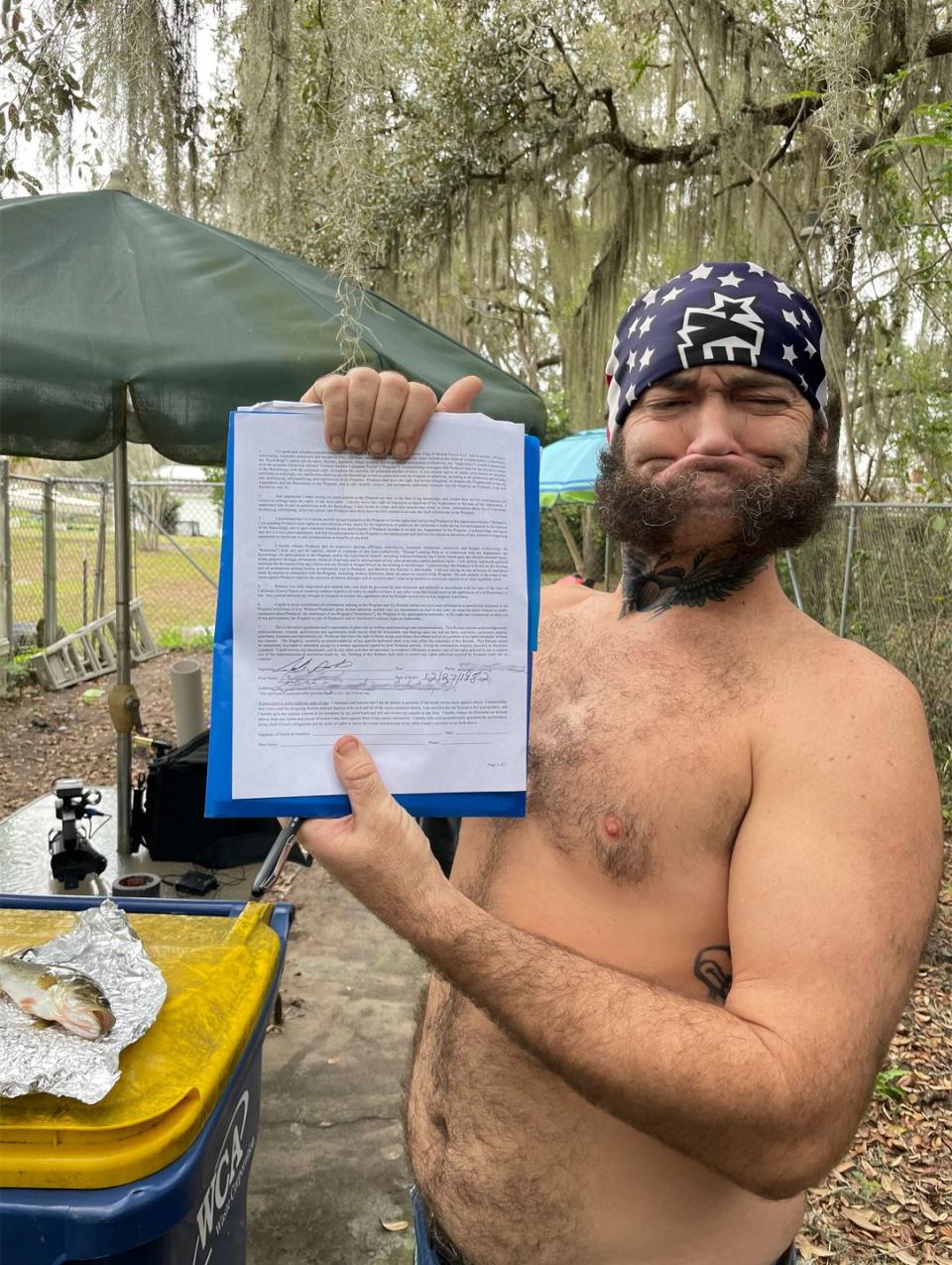
He sat at the laptop and began rearranging multi-colored blocks that represented video clips in the timeline on Adobe Premiere. If, as Callaghan says, “Evan and I share a brain,” the same also appeared to be true of Mosher, Channel 5’s principal cameraman. The two take turns as lead editor on Channel 5 videos, trading notes and sometimes seats in the editing chair, as they fine-tune one another’s rough cuts. (Of Gilbert-Katz’s responsibilities, Callaghan said, “Evan is just a helicopter,” responsible for everything from scouting story ideas to getting release waivers signed and back-seat editing). Mosher turned to me and nodded towards his rainbow-colored Crocs—“If you’re doing any intro blurb describing where you are or anything, can you just talk about how both me and Evan are wearing Crocs?”—then turned back to Callaghan and the laptop screen, where Callaghan was shuffling the blocks that formed the opening video sequence.
“Yeah yeah yeah yeah yeah yeah yeah—I see what you’re saying,” he said. “Just that one.”
The group first came across Kelly J. Patriot while covering a White Lives Matter rally in Orange County last year, where white supremacists turned out to be heavily outnumbered by both counterprotestors and members of the media. Patriot had driven by and, seeing the makings of a culture war confrontation—without, the video reveals, quite understanding what it was—had gotten out and begun waving a telescoping paint pole mounted with four Trump flags.
What first caught Callaghan’s attention, Gilbert-Katz explained, was hearing Patriot merge neighborly grievances with seemingly unrelated political ones. “He was yelling Trump shit, and then also said, ‘Phil Pointer stole my home. He falsified a trustee’s deed with over fifty documents.’ And that was just like, ‘There’s something more to it.’”
Over the next several months, the trio spent more than 100 hours with Patriot, visiting the home he’d lost, and examining the resonance between his personal struggles and his identification with increasingly elaborate political conspiracies. “I see a parallel there,” Patriot says, two minutes into the video. “Taking the election by fraud, taking my house by fraud.”
The Channel 5 brand is an ironic nod to the myth of the straight TV newsman: balance personified, who brings the same unflappability to every event he covers and represents a standard the news industry has long aspired to but never quite satisfied. In this, Callaghan borrows from the Daily Show, whose correspondents create jokes for the rest of us largely by playing it straight no matter how absurd things get.
Still, Channel 5 roams more widely, with shades of Louie Theroux, the British journalist known for an ethnographic travel show about the U.S. in the early 2000s (a clip featuring Theroux’s offbeat ‘wiggle wiggle’ rap resurfaced recently as the soundtrack to a TikTok dance sensation); and Vice, whose early documentaries boasted an informal approach that blended fearlessness and expansive range. “I’m a journalist, but I’m not always a journalist,” Callaghan says. “No one hates me more than journalists.” And yet, as my editor, Ryan, pointed out to him at the diner in Waterbury, Callaghan was doing everything you’d imagine a conventional journalist doing: interviewing the lawyer, getting B-roll of the graveyard where the children of Sandy Hook are buried.
“It’s different, but it’s also not that different at all from Dan Rather fifty years ago,” Ryan said.
Callaghan, smiling: “Right.”
Ryan, after a moment: “Do you know who Dan Rather is?”
Callaghan: “No.”
Callaghan laid back on the bed in Los Feliz to scroll through places to stay in San Francisco that weekend, where they’d be filming the Folsom St. Fair, a long-running celebration of spiked leather and unconventional sex held each year in the SoMa neighborhood. The five-minute screening of Nic’s Kelly J. Patriot edit was turning into a free-form Channel 5 meeting. Callaghan booked an Airbnb on his phone. They workshopped ideas for how to introduce Patriot and other guests on tour.
Sarena Hughes, an animator working with Channel 5 on All City Kings, the animated series, walked in from the makeshift studio in the living room with an update. All City Kings takes its name from a fictional graffiti-tagging crew, with Callaghan voicing the character of West Side, a “greatly exaggerated” version of his teenage self. By self-funding the pilot and releasing it directly on their social platforms, they hope to attract enough buzz to gain leverage with studios interested in funding an entire show. “I know how these budget green-lighters work now—I just sold a movie to HBO,” Callaghan said.
Callaghan grew up in Philadelphia and moved to Seattle in middle school. He met Evan at age 13 at a soccer field on the south end of town. “He handed me his backpack and ran for the bus cuz he didnt want his mom to smell it,” Gilbert-Katz told me over text. “It had a picture book titled ‘dangerous mammals’ and an ounce of weed.” In ninth grade, Callaghan’s parents sent him to the Northwest School, a small, progressive private school near their home in Capitol Hill, where teachers went by their first names and students were allowed to leave campus during the school day. “I was so hyped in middle school as being the young homie, I think they thought that if I went to any public school, I would just destroy my life,” he says.
Callaghan dreamed of becoming of a rapper or graffiti artist; he and two friends recorded an EP under the moniker Self Evident. He credits a journalism class he signed up for in ninth grade with setting him on the path that gave the world Channel 5. The teacher let his students leave class to report at will, telling them only, Callaghan said, “You better have a story by the end of the week.” Callaghan wrote about Seattle’s homeless encampments and people hopping trains; he wrote about the dark web. He took the class all four years of high school.
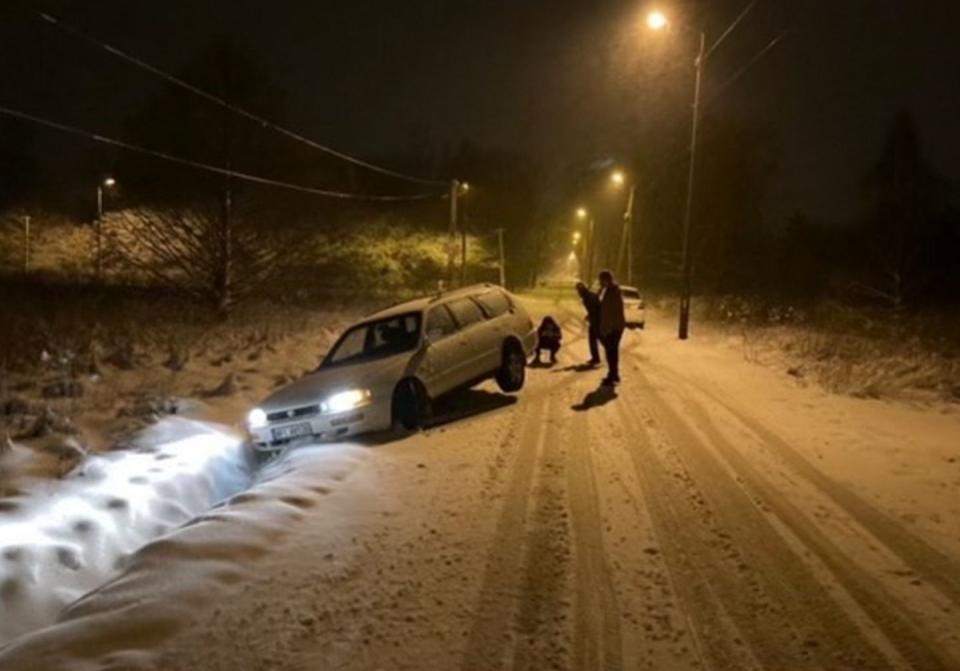
In college, Callaghan spent a summer hitchhiking with a notebook on a nationwide tour of Greyhound stations and truck stops, and self-published a travelogue called All Gas No Brakes, then pitched the comic meme company Doing Things Media on a follow-up web series. When he landed a contract that included an RV and enough of a salary to go on the road with Mosher and Gilbert-Katz, it inaugurated a three-year stretch in which the trio lived almost entirely out of a shared RV, sleeping in Walmart parking lots and crisscrossing the West. “Every situation you can imagine with a shitty roommate has happened in the RV,” Callaghan says. Intimate habits, round-the-clock smells, confined space. “Working together is easy after that.”
The whole thing went better than anyone could have expected—except for one thing: In their rush to sign the contract, they had unwittingly given up creative control. “I signed an employment contract without reading it,” Callaghan later told fans in an Instagram post. “Lesson learned.”
The day after I arrived in L.A., Callaghan suggested meeting for drinks at 7, but when I showed up at the house in Los Feliz, the windows were dark. Gilbert-Katz came to the door, then disappeared for a minute to call Mosher to find out where Callaghan was. When he returned, he said, “I think he’s out of town.” He pulled up Callaghan’s Instagram story: Callaghan driving his pickup truck, with the line “What up, Bakersfield?” superimposed over his head.
Bakersfield?
False alarm. “I need to be in bakersfield by 11,” he texted, by way of explanation. We met an hour later at a bar near a northbound on-ramp for Interstate 5. Though the RV still makes an occasional appearance these days, for destinations west of the Rockies, it’s not unusual for the Channel 5 crew to travel separately and figure out when and where they’re meeting on-site. “I hate airports,” Callaghan said, explaining why he’d decided at the last minute to drive his own truck. “They’re just like schools and jails. They have similar attitudes—just fascistic, highly policed.”
I asked Callaghan if he had ever felt like his reporting put him in danger. He shook his head. “Mainstream reporters who roll up with a CNN mic box and ask loaded questions, they’re in danger,” he said. “I roll in with a suit, chillin’, and ask you, ‘What’s on your mind?’ I’m not in danger.”
Callaghan told a story about feeling suddenly faint, with low blood sugar, while he was at a Stop the Steal rally in Atlanta after the 2020 election, as he was “standing between Black bloc antifa kids and Infowars junkies, interviewing them both at once,” he said. “That’s how people see me.” At the time, he’d had to sit on the ground, surrounded by anarchist leftists with semiautomatic weapons, “feeding me Pop Tarts and pouring Sunny D in my mouth.”
The story is less evidence of Callaghan’s neutrality than of the value of his push to report from the frontlines of any singular experience, and of his knack for inhabiting an unusually wide range of points of view. The experience that left its deepest mark on his career was covering the aftermath of George Floyd’s murder in Minneapolis, in the summer of 2020. When Floyd was killed, just before Memorial Day, Callaghan was in Orlando scouting a piece for All Gas No Brakes. Scrolling through coverage of burning stores and protests over police violence, he felt as though conservative media was depicting theft and property damage as motivated by greed; left-leaning outlets saw looting seeded by cops or other unseen actors who provoked confrontations and incited vandalism.
For Callaghan, the angle to take seemed obvious: People are burning buildings for a reason. Why? And why is nobody else talking to them? He got on a plane, and Laci McBride, a college friend from Minneapolis who’d filmed many of Callaghan’s Quarter Confessions interviews, picked him up at the airport when he arrived. “She took me straight to the burning K-Mart on Lake St. We filmed from 11 to 4 a.m.,” he said. This time, Callaghan decided not to put on a suit. “It was the first serious political issue I’ve covered in my life,” he said.
The resulting video, which did run on All Gas No Brakes’ YouTube channel, was just under six minutes. Andrew walked past smashed candy machines into a big-box store advertising “25 to 60% off, Everything must go.” He grabbed a holiday sweater off the rack and led the camera down a smoldering crayon aisle. Outside, he asked short, direct questions of the people lingering as a nearby police precinct burned. “Why do you think people are criticizing the building burnings?” he asked two young Black men.
“They don’t know,” one said. “They don’t care about the humans. They don’t care about the Black folk.”
“This is temporary,” the other added, an apparent reference to the wall of flames behind him. “This is our future we’re standing up for.”
The feedback from Callaghan’s fans was overwhelmingly positive, and he continued more serious coverage of protests in Portland and of the Derek Chauvin trial. In the months since, when he has donned a suit again, it’s been without irony, as at the courthouse near Sandy Hook. The reaction, internally, he said, was: “I can do journalism.”
Over the front fence of the patio outside the bar near the I-5 on-ramp, we could make out the roofline of an RV pulling up, silhouetted against the glare of a streetlight. Change of plans: Callaghan had left home planning to drive up solo; now, the rest of the crew was outside, ready to pick up him in the RV. It was a conundrum, and yet not really—he knew he’d go in the RV. “My truck’s around the corner,” Callaghan said. “I’m probably gonna get towed.”
You Might Also Like

